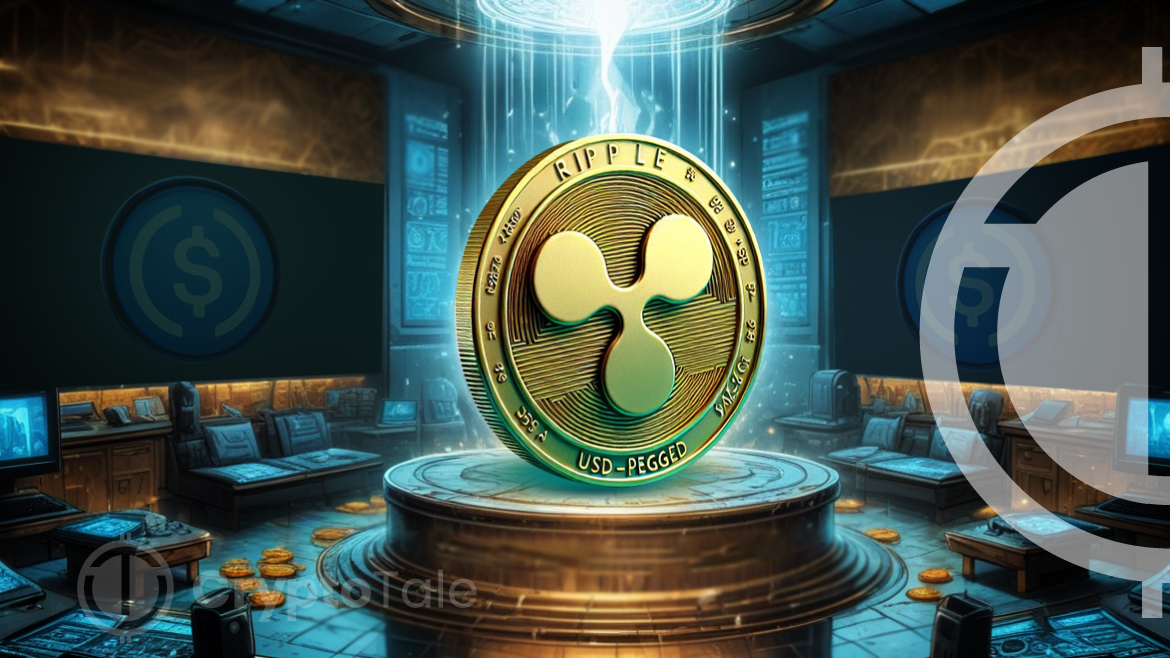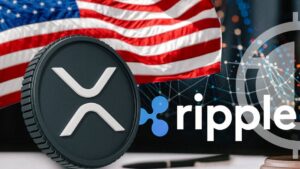
Amidst its legal battle with the SEC over unregistered crypto assets, Ripple prepares to introduce its own stablecoin pegged to the U.S. dollar. This is a key development for Ripple, aiming to bridge the gap between decentralized finance and traditional finance. De Meijer, an independent economist and owner of MIFSA, describes the situation as a game-changer for the XRP Ledger ecosystem.
Ripple Stablecoin Launch Announcement
On April 4, 2024, Ripple announced its plan to launch a stablecoin pegged to the U.S. dollar at a ratio of 1:1 and backed by assets like U.S. dollar deposits, U.S. government bonds, and cash equivalents. The stablecoin market is over $150 billion, and with the addition of a major player like Ripple, it is expected to surge rapidly.
The stablecoin will be first launched in the U.S., but Ripple hasn’t ruled out the possibility of introducing regional products to other markets, such as Europe and Asia. The coin will be primarily aimed at institutions and enterprise customers.
One key point in launching a new stablecoin is transparency. Ripple plans to use a reputable third-party accounting firm to independently audit the reserves regularly and publish a monthly report on its reserves to ensure transparency. Markus Infanger, a senior vice president of RippleX, said,
We are at the start of a paradigm shift, and the announcement is a result of demand. We are seeing traditional financial institutions not only deploying pilots tokenizing real-world assets, but we are having conversations with asset managers, banks, and developers, who are interested in how tokenized financial assets on public blockchains can reduce friction and pain points and solve liquidity problems.
Gilles Chemla, a professor of finance at Imperial College Business School, said that Ripple ought to have its own stablecoin as a major player. He also said that this was long overdue, as stablecoins have played an important role in keeping assets safe in the fintech space. They have also provided the type of low-volatility digital currency that is prized by users for digital payments and as part of a portfolio.
Ripple’s stablecoin will be initially available on the XRPL and Ethereum blockchains. The token will be based on Ethereum’s ERC-20 token standard, which could enhance its adoption and utility across various blockchain ecosystems. Furthermore, it plans to expand into other blockchains, decentralized finance, and others.
Integrating stablecoin with multiple crypto exchange platforms will be more helpful, as it can increase the blockchain’s accessibility and liquidity. The exact launch date of Ripple stablecoin has yet to be determined, but it will likely be available later this year.
What Is the Motivation Behind Ripple’s Stablecoin Launch?
The motivation behind Ripple’s sudden launch of stablecoin might be regulatory pressure. Introducing a stablecoin backed by dollar reserves can be seen as a strategic move to address the ongoing lawsuit between Ripple (XRP) and the SEC. By launching a stablecoin, Ripple aims to offer a regulatory-compliant alternative to XRP, thus reducing concerns about regulations and investor protection. In addition, Ripple’s development of its own stablecoin indicates a potential strategy for navigating the future regulatory landscape and integrating a Ripple-backed stablecoin into its On-Demand Liquidity (ODL) system.
Moreover, creating a stablecoin offers heightened stability and enables cheap and fast global transactions. This can enhance liquidity, attract developers, and expand the XRP ledger’s user base. Furthermore, it could potentially attract businesses and financial institutions, which can help stimulate the XRP Ledger ecosystem.
How Will the Stablecoin Launch Transform the XRP Ledger Ecosystem?
Ripple’s capabilities within the XRP Ledger, such as decentralized exchange and automated market maker, were originally designed to leverage XRP as a bridge asset. However, XRP usage has been very low compared to other blockchain networks. The main reason for XRP’s low utilization is its volatility, which has caused many of its partners to neglect XRP for payments.
To solve this problem, Ripple planned to issue its own stablecoin to attract more users and revitalize the XRP Ledger’s decentralized finance ecosystem. Launching a stablecoin could increase interest in Ripple’s ecosystem, especially among financial institutions like banks.
Ripple plans to merge XRP and its stablecoin into payment solutions, aiming for superior customer experience and pioneering a major enterprise application for the asset. The introduction of a reliable stablecoin incentivizes Ripple to boost financial engagement on the XRP Ledger, fostering diverse use cases, liquidity, and growth opportunities for both developers and users. This method helps reinforce the XRPL ecosystem, positioning it as a robust and versatile platform in the realm of digital assets.
What Is the Importance of XRP in Ripple’s Stablecoin Move?
Different from most people’s concern that the Stablecoin might overthrow XRP, De Meijer argued the opposite of what everyone expected. He clarified that Ripple’s choice to introduce its own stablecoin is a reaction to the growing need for such a digital asset within the XRP Ledger ecosystem. Furthermore, he stressed that XRP still remains important and is an essential component of Ripple’s dual asset strategy.
De Meijer noted that Ripple’s introduction of a stablecoin aligns with the company’s goal of enhancing the XRP Ledger (XRPL) and that this initiative could alter the dynamics of the XRP Ledger ecosystem. In addition, he said that the combination of Ripple and stablecoin presents an ideal environment for institutions and individual investors who aren’t ready to adopt crypto assets but are interested in using XRPL’s capabilities.
Ripple’s Entry To Intensify Stablecoin Market Competition
Stablecoins are sought after because of their consistent value, allowing investors to avoid concerns about market volatility. Currently, the stablecoin market is valued at around $150 billion and is projected to exceed $2.8 trillion by 2028. Tether (USDT), the world’s largest stablecoin issuer, holds over $110 billion of the market capitalization. With the launch of Ripple stablecoin, the market competition will be even more fierce.
Conclusion
Ripple’s stablecoin launch represents a major shift for the XRP Ledger ecosystem and the broader cryptocurrency market. This strategic move addresses regulatory concerns and positions Ripple to drive greater financial activity and liquidity within the XRP Ledger. As Ripple navigates regulatory landscapes and pioneers enterprise applications, the competition in the stablecoin market is set to intensify, challenging major players like Tether.
By launching stablecoins on both the XRP Ledger and Ethereum, Ripple is set to unlock new opportunities across multiple blockchain ecosystems. Furthermore, by leveraging both XRP and its new stablecoin, Ripple could redefine the dynamics of digital finance, offering a versatile and reliable platform for global transactions.














